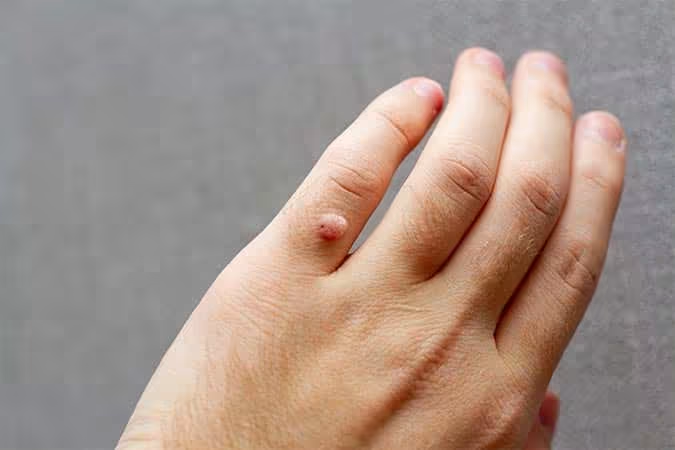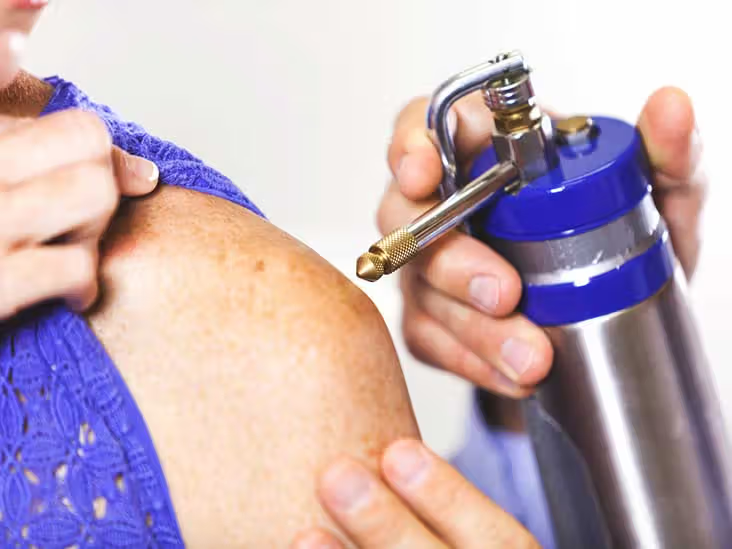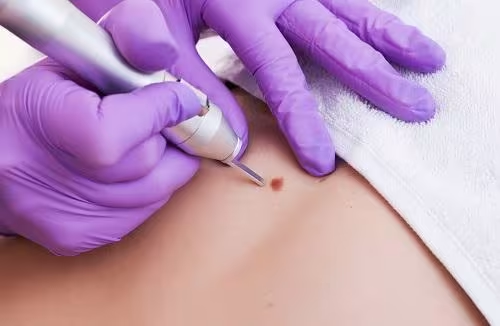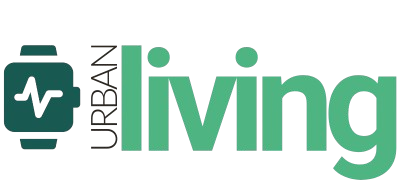Understanding Viral Warts: Causes, Types, and Concerns
Warts are benign skin growths caused by the human papillomavirus (HPV), affecting approximately 10-12% of the population across all age groups.
These common skin conditions can appear anywhere on the body and often cause both aesthetic concerns and physical discomfort for many individuals in Singapore.
What Causes Warts?
Warts develop when the human papillomavirus (HPV) enters the body through tiny breaks in the skin.
With over 100 different types of HPV strains identified, specific strains are responsible for different types of warts. The virus targets keratinocytes in the outer skin layer, causing rapid cell growth that results in the characteristic raised lesions.
What makes warts particularly resilient is the nature of the virus itself. HPV can survive in extremely dry conditions, freezing temperatures, and remain viable in the external environment for extended periods.
This resilience contributes to the contagious nature of warts and their tendency to spread both from person to person and to different areas of the same person’s body.
Risk Factors for Developing Warts
Several factors increase your likelihood of developing warts:
- Weakened Immune System: Individuals with compromised immunity due to conditions like diabetes, HIV/AIDS, or those taking immunosuppressive medications are more susceptible to HPV infections and typically experience more stubborn cases.
- Direct Skin Contact: Touching someone else’s warts or even your own (a process called autoinoculation) can spread the virus to new areas.
- Exposure to Contaminated Surfaces: Walking barefoot in public swimming pools, locker rooms, or communal showers increases your risk of contracting plantar warts.
- Skin Injuries: Cuts, scratches, or other breaks in the skin provide entry points for the virus.
- Age Factors: Children and teenagers have higher susceptibility due to their developing immune systems.
- Personal Habits: Activities like nail-biting, shaving, or picking at warts can spread the virus to other body areas.
You might want to read: Scars, Pores, And Milia: A Doctor Answers Readers’ Skin Questions
Different Types of Warts
Warts manifest in various forms depending on their location and the specific HPV strain involved:
Common Warts

Typically appearing on the hands, fingers, elbows, and knees, these warts have a distinctive cauliflower-like appearance with a rough, elevated surface. They may contain tiny black dots, which are actually small, clotted blood vessels.
Plantar Warts
These warts develop on the soles of feet, often growing inward due to pressure from walking. This inward growth can make plantar warts particularly painful when standing or walking. They may appear as small, rough growths with tiny black pinpoints.
Flat Warts
Commonly found on the face, neck, and areas subject to frequent shaving, flat warts are smaller, smoother, and tend to appear in larger numbers. Their flat-topped appearance and tendency to occur in clusters make them distinct from other wart types.
Filiform Warts
These warts have finger-like projections extending from their surface and commonly appear on facial areas, particularly around the eyes, nose, and mouth. They often coexist with flat warts and can be particularly concerning due to their visible location.
Genital Warts
Appearing as small, flesh-colored or grayish growths in the genital region, these warts are transmitted through sexual contact. They may form clusters resembling cauliflower and are caused primarily by HPV types 6 and 11.
Why Consider Professional Wart Removal?
While approximately 60% of warts may resolve spontaneously within two years as your immune system naturally fights the infection, there are compelling reasons to seek professional treatment:
Aesthetic Concerns
Warts can be visually unappealing, particularly when they appear on visible areas like the face or hands, potentially affecting self-confidence and social interactions.
Prevention of Spread
The contagious nature of warts means they can spread to other body parts or to other individuals. Early treatment helps contain the infection and prevents further transmission.
Elimination of Discomfort
Certain warts, especially plantar warts on weight-bearing areas, can cause significant pain and discomfort during daily activities.
Health Risk Reduction
Some HPV strains associated with certain types of warts (particularly genital warts) have links to increased cancer risks. Professional treatment helps minimize these potential health concerns.
Enhanced Quality of Life
Removing warts allows for more comfortable participation in everyday activities without pain or self-consciousness.
More article: The Definitive Guide to Mole Removal in Singapore
Professional Wart Removal Options in Singapore
Singapore offers a comprehensive range of wart removal treatments, from conventional approaches to cutting-edge technologies. Each method has specific advantages, making personalized treatment plans essential for optimal results.
Read more: A Complete Guide To Laser And Skin Treatments In Singapore
Cryotherapy

Cryotherapy remains one of the most widely used wart removal methods in Singapore. During this procedure, a healthcare provider applies liquid nitrogen to freeze the wart tissue, causing it to form a blister and eventually fall off.
Advantages:
- Minimally invasive
- No need for anesthesia
- Generally well-tolerated
- Suitable for most wart types
Considerations:
- May require multiple sessions
- Can cause temporary blistering and discomfort
- Potential for hypopigmentation (lightening of the skin)
- Not always effective for deeper warts
Cryotherapy typically takes only minutes to perform, with healing occurring over 7-10 days as the treated area scabs and eventually sheds.
Laser Wart Removal
Singapore clinics offer several advanced laser technologies for wart removal, with the two main approaches being ablative and vascular lasers.
CO2 Laser (Ablative)

The Ultrapulse CO2 laser precisely vaporizes wart tissue through concentrated energy absorption by water molecules in the cells. This advanced technology allows practitioners to selectively remove abnormal tissue with minimal collateral damage.
Advantages:
- High precision
- Effective for stubborn or large warts
- Often requires fewer sessions
- Controls bleeding through simultaneous coagulation
Considerations:
- Requires local anesthesia
- Slightly higher risk of scarring compared to some alternatives
- 7-10 day recovery period
Vascular Lasers
Vascular lasers (including pulsed dye, KTP, or long-pulsed NdYAG) target the blood vessels feeding the wart rather than destroying the wart tissue directly. By eliminating the blood supply, the wart eventually dies and falls off.
Read more: The Ultimate Guide to Fractional Lasers in Singapore
Advantages:
- Minimal scarring risk (“scarless” option)
- Excellent for facial warts
- Less painful recovery
- Good option for visible areas
Considerations:
- Limited penetration depth
- Multiple sessions often required
- Less effective for larger or very deep warts
Electrosurgery
Electrosurgery employs alternating electric current to generate heat, effectively burning away wart tissue. This method is particularly effective for larger or more persistent warts.
Advantages:
- Immediate and visible results
- Effective for larger warts
- Good option when other methods have failed
Considerations:
- Higher risk of scarring
- More painful procedure (requires anesthesia)
- 7-10 day recovery period
- Not ideal for facial warts
Surgical Excision
Surgical removal involves physically cutting out the wart using specialized instruments. Two primary approaches are used:
Shave Removal
Using a straight razor, the practitioner shaves off warts that protrude above the skin surface. This technique minimizes damage to surrounding tissue and generally doesn’t require stitches.
Scissor/Snip Excision
This technique involves grasping the wart with forceps, gently pulling it away from the skin, and cutting around and beneath it with curved scissors to ensure complete removal.
Advantages:
- Complete removal in one session
- Tissue can be sent for biopsy if needed
- Effective for unusually large warts
Considerations:
- Highest risk of scarring
- Longer healing time (10-14 days)
- Not recommended for facial warts
- Requires local anesthesia
Radiofrequency Ablation
Radiofrequency technology uses high-frequency energy that is strongly absorbed by water in cells, causing controlled vaporization or coagulation depending on the selected waveform.
This versatile approach can be used to either dissect out warts or coagulate them.
Advantages:
- Precise control over tissue removal
- Minimal bleeding
- Effective for moderately sized warts
Considerations:
- Requires specialized equipment
- Moderate risk of scarring
- Needs local anesthesia
Prescription Treatments
For certain cases, Singapore practitioners may recommend prescription-strength topical or injectable treatments:
Topical Medications
These include stronger concentrations of salicylic acid, immune system stimulants like imiquimod, or combination formulas like Verrumal cream that target the wart virus directly.
Immunotherapy Injections
Substances like Candida antigen can be injected into or near warts to stimulate the body’s immune response against HPV.
This approach helps your body recognize and fight the virus causing the warts.
Advantages:
- Less invasive than surgical options
- Lower risk of scarring
- Can address multiple warts simultaneously
Considerations:
- Slower results
- Multiple applications or injections needed
- Variable effectiveness depending on individual immune response
You might want to read: What Treatment is Best for Anti-Aging?
Comparison of Wart Removal Methods
Treatment Comparison Table
| Treatment | Key Features | Recovery | Best For |
|---|---|---|---|
| Cryotherapy | Freezing method with moderate pain | 7-10 days, moderate scarring risk | Small to medium warts |
| CO2 Laser | Precise vaporization, minimal pain with anesthesia | 7-10 days, low-moderate scarring | Stubborn or deep warts |
| Vascular Laser | Targets blood vessels, minimal discomfort | 3-7 days, very low scarring | Facial warts, visible areas |
| Electrosurgery | Electric current, moderate pain with anesthesia | 7-10 days, higher scarring risk | Larger warts |
| Surgical Excision | Physical removal, anesthesia required | 10-14 days, highest scarring risk | Large or unusual warts |
| Radiofrequency | Energy-based, minimal pain with anesthesia | 7-10 days, moderate scarring | Medium-sized warts |
| Prescription Treatments | Topical/immune stimulation, mild discomfort | Weeks to months, minimal scarring | Multiple small warts |
Specialized Approaches by Wart Location
Facial Wart Removal
Warts on the face require special consideration due to aesthetic concerns and the importance of minimizing scarring in such visible areas. Singapore practitioners typically recommend:
- First Choice: Vascular lasers for their “scarless” results and minimal downtime
- Second Choice: Precisely controlled CO2 laser for more stubborn cases
- Combination Approach: Multiple laser types may be used in sequence for optimal results with minimal scarring
The facial skin generally heals well, but sun protection is crucial during recovery to prevent post-inflammatory hyperpigmentation, especially in Singapore’s sunny climate.
Read more: Guide to Seeing a Dermatologist in Singapore
Plantar Wart Removal
Warts on the feet present unique challenges due to:
- Pain when walking or standing
- Tendency to grow inward due to pressure
- Thicker skin with slower healing properties
- Functional limitations during recovery
For plantar warts, Singapore practitioners often recommend:
- Vascular lasers for pain-sensitive patients or those who cannot afford downtime
- Cryotherapy for small to medium plantar warts
- CO2 laser for particularly deep or stubborn cases
- Combination approach with initial laser treatment followed by topical medications
Special consideration must be given to aftercare, including appropriate footwear during healing and weight distribution management.
Genital Wart Removal
Given the sensitive nature of genital warts and their potential health implications, treatment approaches prioritize:
- Complete removal to reduce transmission risk
- Minimizing discomfort in sensitive areas
- Addressing potential concerns about HPV-related cancer risks
Singapore practitioners typically recommend:
- CO2 laser or radiofrequency ablation for efficient single-session removal
- Topical immunomodulators for smaller or multiple warts
- Combination approaches for comprehensive treatment
All genital wart patients should receive counseling regarding safe sexual practices and potential vaccination options against high-risk HPV strains.
Read more: Complete Guide to Keloid Scar Removal in Singapore
The Wart Removal Procedure Experience
Understanding what to expect during wart removal helps reduce anxiety and ensures proper preparation.
Before Treatment
Prior to any wart removal procedure in Singapore, you can expect:
- A thorough assessment of your warts and medical history
- Discussion of treatment options and their respective benefits
- Clear explanation of potential risks and recovery expectations
- Cost breakdown and potential Medisave claims discussion
- Pre-procedure instructions (which may include avoiding certain medications)
During Treatment
The typical procedure follows these steps:
- Preparation: The area is thoroughly cleaned and disinfected
- Anesthesia: For most invasive procedures, topical or local anesthesia is applied (taking 20-30 minutes to take full effect)
- Treatment Application: The selected removal method is performed, typically taking 5-30 minutes depending on the number and complexity of warts
- Hemostasis: For methods that cause bleeding, the area is cauterized or pressure-applied
- Dressing: Appropriate wound covering is applied based on the treatment type and location
After Treatment
Post-procedure care is crucial for optimal healing:
- Immediate Aftercare: Instructions for wound cleaning and dressing changes
- Pain Management: Recommendations for managing any discomfort
- Activity Restrictions: Guidelines regarding exercise, swimming, and other activities
- Sun Protection: Particularly important in Singapore’s climate to prevent pigmentation issues
- Follow-up: Scheduling of review appointments if needed
Recovery and Aftercare
Proper aftercare significantly impacts both healing time and aesthetic outcomes following wart removal.
General Aftercare Guidelines
- Keep the Area Clean: Gently wash with mild soap and water as directed
- Avoid Picking or Scratching: This can introduce infection or cause scarring
- Apply Prescribed Creams: Use antiseptic and scar prevention products as recommended
- Protect from Sun Exposure: Use SPF 30+ sunscreen and/or protective clothing
- Monitor for Complications: Watch for signs of infection or abnormal healing
Timeline for Healing
While individual healing varies, most patients can expect:
Days 1-3: Initial tenderness, possible mild swelling or redness
Days 3-7: Scab formation (do not pick or remove)
Days 7-14: Scab naturally falls off, revealing new skin beneath
Weeks 2-6: Gradual fading of any residual pinkness
Months 1-6: Complete maturation of the treated area with minimal visible evidence of treatment
When to Resume Activities
- Light activities: Usually possible immediately
- Exercise: Wait until scabs have formed (typically 2-3 days)
- Swimming/Soaking: Avoid until the wound is completely healed (7-10 days)
- Sun exposure: Minimal for at least 4 weeks after treatment
Cost of Wart Removal in Singapore
The cost of wart removal in Singapore varies widely based on several factors:
Price Range Factors
- Treatment Method: Advanced laser treatments typically cost more than conventional methods
- Number of Warts: Multiple warts require more time and resources
- Size and Complexity: Larger or deeper warts necessitate more extensive treatment
- Location: Warts in sensitive or difficult-to-treat areas may incur additional costs
- Provider Expertise: Specialists with advanced experience may charge premium rates
Typical Price Ranges
While prices vary between clinics, general price ranges in Singapore include:
- Simple Cryotherapy: $50-200 per session
- Electrosurgery: $100-400 depending on complexity
- Laser Treatments: $200-600 per session
- Surgical Excision: $300-1000+ for complex cases
Medisave Coverage
A significant advantage for Singapore residents is that wart removal treatments are often Medisave-claimable, particularly when:
- The warts cause physical symptoms (pain, bleeding)
- Multiple treatments are required
- The procedure is performed by an accredited specialist
The exact claimable amount depends on the procedure’s complexity and is determined on a per-surgery basis. Clinic staff can typically provide guidance on eligibility and the claims process.
Preventing Wart Recurrence
Even after successful removal, warts can sometimes recur due to persistent virus in surrounding tissue or reinfection. These strategies help minimize recurrence risk:
Post-Treatment Strategies
- Complete the Full Treatment Course: Follow through with all recommended follow-up treatments and topical applications
- Boost Your Immune System: Maintain overall health through proper nutrition, adequate sleep, and stress management
- Practice Good Hygiene: Wash hands regularly and avoid touching existing warts
- Protect Your Feet: Wear flip-flops in public showers, pools, and locker rooms
- Keep Skin Healthy: Moisturize to prevent cracks and breaks that could allow virus entry
- Monitor Closely: Address any signs of recurrence promptly for easier treatment
When to Seek Follow-up Care
Contact your healthcare provider if you notice:
- New growths in the treated area
- Persistent pain, redness, or swelling beyond the expected recovery period
- Signs of infection (increased warmth, pus, fever)
- Unusual scarring or pigmentation changes
Choosing the Right Wart Removal Provider in Singapore
With numerous clinics offering wart removal services, selecting the right provider ensures optimal outcomes.
Key Considerations
- Provider Qualifications: Look for board-certified dermatologists or experienced aesthetic physicians
- Available Technologies: Clinics with multiple treatment options can customize approaches based on your specific needs
- Treatment Success Rates: Ask about the clinic’s experience with cases similar to yours
- Follow-up Care: Ensure the provider offers comprehensive aftercare support
- Patient Reviews: Research previous patient experiences, particularly for warts similar to yours
- Cost Transparency: Choose providers who offer clear pricing information without hidden fees
Frequently Asked Questions About Wart Removal
General Wart Questions
Q: How do I know if I have a wart or something else?
A: Warts typically have a rough surface, sometimes with tiny black dots (small blood vessels). They may appear as raised bumps with irregular borders.
If you’re uncertain, professional diagnosis is recommended as warts can sometimes be confused with corns, calluses, or even certain skin cancers.
Q: Are all warts contagious?
A: Yes, all warts are caused by contagious viruses. However, the risk of transmission varies based on factors like the type of wart, its location, and your immune response.
Direct skin contact with warts increases transmission risk.
Q: Can warts go away on their own without treatment? A: Approximately 60% of warts clear spontaneously within two years as your immune system recognizes and fights the virus. However, during this time, they may grow larger or spread to other body areas. Treatment is often recommended to prevent spread and address aesthetic or comfort concerns.
Q: What happens if I leave warts untreated?
A: Untreated warts may grow larger, multiply, or spread to other body areas. While most warts are benign, they can cause discomfort, especially in weight-bearing areas.
Additionally, untreated warts present an ongoing transmission risk to yourself and others.
Q: Are warts related to poor hygiene?
: Warts are caused by a virus, not poor hygiene. However, maintaining good hygiene helps prevent spreading warts to other body parts or to other people.
Anyone can develop warts regardless of their hygiene practices.
Treatment-Related Questions
Q: Is wart removal painful?
A: Most professional wart removal procedures in Singapore involve local anesthesia to minimize discomfort during treatment. Some temporary discomfort during recovery is normal, but this is typically manageable with over-the-counter pain relievers.
Vascular laser treatments generally cause the least post-procedure discomfort.
Q: How many treatment sessions will I need?
A: The number of sessions varies based on the wart type, size, location, and chosen treatment method. Many warts can be removed in a single session, particularly with surgical or CO2 laser approaches.
Cryotherapy and vascular lasers often require 2-3 sessions spaced 2-3 weeks apart.
Q: Will wart removal leave a scar?
A: The risk of scarring depends on the treatment method, wart location, and your skin’s healing characteristics. Vascular lasers carry the lowest scarring risk, while surgical excision has the highest.
For visible areas like the face, practitioners typically select methods that minimize scarring potential.
Q: Can I exercise after wart removal?
A: Light activities can usually be resumed immediately, but more vigorous exercise should be postponed until scabs have formed (typically 2-3 days). For plantar warts, weight-bearing exercise might need to be delayed longer. Always follow your provider’s specific instructions based on your treatment type and location.
Q: How soon will I see results after treatment?
A: Treatment results timeline varies by method. Surgical and CO2 laser methods provide immediate wart removal, though complete healing takes 1-2 weeks.
Cryotherapy results become apparent as the treated area blisters and sheds over 1-2 weeks. Vascular lasers may require multiple treatments before complete clearance.
Special Cases
Q: Are genital warts treated differently from other warts?
A: Yes, genital warts require specialized approaches due to the sensitive location and potential health implications.
Treatment typically focuses on complete removal while minimizing discomfort. Additionally, patients with genital warts should receive counseling regarding sexual health practices and potential HPV vaccination.
Q: Are there any warts that shouldn’t be removed?
A: Most warts can be safely removed, but certain situations warrant special consideration. Very large warts, warts in sensitive areas, or those in patients with conditions like diabetes or immune disorders may require modified approaches.
Always consult a healthcare professional rather than attempting self-treatment in these cases.
Q: Do children’s warts require different treatment?
A: Children’s warts are often treated more conservatively, as their immune systems may clear the virus more effectively and their skin is more sensitive.
Painless options like topical treatments or gentle cryotherapy are typically tried before more invasive methods.
Q: Can pregnant women undergo wart removal?
A: Many wart removal options are safe during pregnancy, but certain treatments may need to be avoided. Always inform your healthcare provider if you are pregnant or planning pregnancy.
Treatments like cryotherapy are generally considered safe, while some laser treatments or certain medications might be postponed.
Post-Treatment Questions
Q: How can I prevent warts from returning after removal?
A: To minimize recurrence risk, follow all post-treatment instructions carefully, avoid direct contact with warts (yours or others’), wear protective footwear in public wet areas, and maintain overall immune health through proper nutrition and lifestyle habits.
Q: What should I do if I notice new warts developing after treatment?
A: Seek prompt medical attention if you notice new growths. Early intervention typically results in easier treatment and better outcomes.
Don’t assume new growths are necessarily warts – professional assessment ensures appropriate care.
Q: Is there a permanent cure for warts?
A: While individual warts can be permanently removed, the HPV virus may remain dormant in your body, potentially causing future outbreaks.
However, many people experience complete resolution without recurrence, particularly if their immune system effectively clears the virus.
Q: Can I be vaccinated against warts?
A: HPV vaccines (like Gardasil and Cervarix) protect against certain high-risk HPV strains associated primarily with cervical cancer and genital warts. They don’t protect against all wart-causing HPV strains. These vaccines are most effective when administered before exposure to the virus.
Conclusion
Wart removal in Singapore offers numerous effective options tailored to each patient’s specific needs.
Whether prioritizing minimal scarring, rapid recovery, or long-term results, modern treatment approaches provide solutions for every wart type and location.
By understanding your options and working with qualified professionals, you can achieve clear, wart-free skin with minimal disruption to your daily life.
For optimal results, seek early intervention when warts first appear, follow aftercare instructions diligently, and implement preventive measures to minimize recurrence risk.
With Singapore’s advanced medical facilities and experienced practitioners, effective wart management is readily accessible, allowing you to address both the aesthetic and health concerns associated with these common skin growths.

